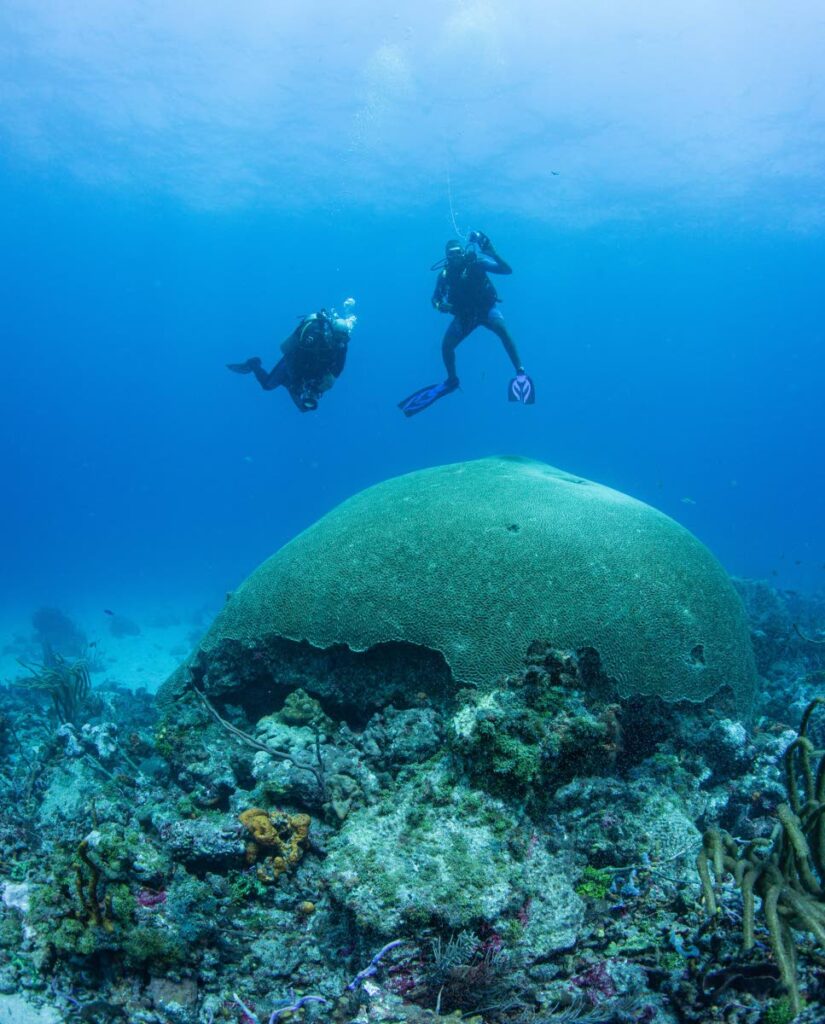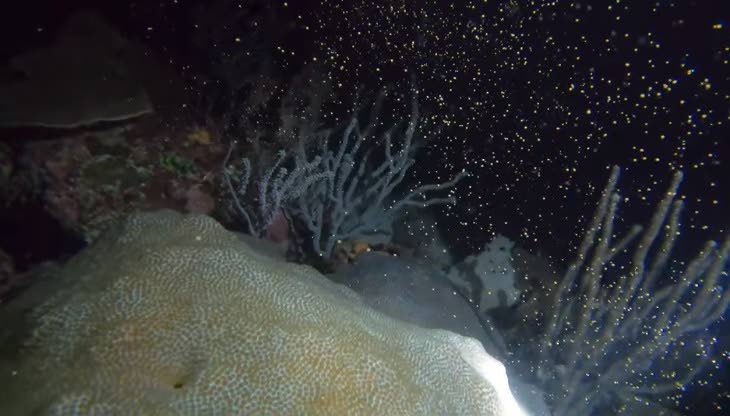IMA hopes coral spawning sparks growth

DAVID SCARLETT
Tobago’s coral reefs, one of the biggest attractions, are being prioritised for protection by the Institute of Marine Affairs (IMA).
The IMA said reproductive conservation is a key aspect of ensuring sustainability.
Last week, the IMA posted a video of coral spawning on their Facebook page showing the beauty of the reef’s reproductive process.
In an interview with Newsday, Anjani Ganase, a marine biologist at the IMA, said that the organisation is currently doing a feasibility assessment for strategies targeting coral and seagrass restoration in Tobago.
The project, called the Marine Resilience Initiative (MARIN), is a pilot operation funded by BPTT and will be ongoing for 18 months. Part of it involves monitoring coral spawning in Tobago, which has yet to be done at a significant level.
“We’re monitoring for coral spawning to see if we can do larval-based strategies for restoration,” said Ganase. “By collecting sperm and eggs from the corals, we can enhance the fertilisation process and release fertilised coral eggs onto the reef.
“The first stage is monitoring for coral spawning to see when they spawn, if they spawn, to what capacity and whatnot. There are a couple outputs: one is to know more about the corals’ reproductive life cycles by mapping when corals are spawning and what species are spawning.”
“Currently, through our monitoring, we’re not seeing an increase in coral cover; meaning no new populations of corals are popping up. The overall coral cover is not increasing or recovering from past bleaching events that we’ve had. We had one in 2010 and we’ve seen a loss in coral cover by about 50 per cent with little recovery since then. Now that begs the question – are the corals not reproducing? Or are they not surviving under reproduction?”
Ganase believes that the reef’s management has to take accountability for its survival and growth. “We know that management is a top factor when it comes to reef recovery. We also know that there are strategies where we can use coral spawning for enhancing fertilisation and the survival of the reef when we outplant it.

"So we can then apply these greater strategies to a larger project, as this is just a pilot. We hope to test these strategies out.”
How important is the spawning process to the reef's survival?
“We know they’re spawning, we can collect their sperm and eggs, we can enhance the fertilisation process; meaning we can have more coral larvae being born and then we can settle them out on special tiles which can then go on the reef, and encourage better survival of the corals.”
The reef's health isn’t only important for the corals, but also for the marine life that depend on them, and for human benefit as well.
“Restoration is a part of reef conservation and the maintaining of reef function.
"We benefit from healthy reefs. These underwater cities are homes to the fish we eat. Many of the commercial fish that we consume – lobster, grouper, snapper – they spend most of their lives on coral reefs.
“They’re also nurseries for the organisms that populate the reef and the open ocean. The health of the corals is important and we’re just looking at the particular health in terms of the reproduction of corals.”
Ganase said there is also a recreational benefit from the reefs. She claimed that 40 per cent of tourists come to Tobago for activities related to coral reefs, whether it’s snorkelling, viewings from the glass-bottom boats or just liming in Pigeon Point, a coral-based sand beach.
"Coral reefs also give us coastal protection, the production of sand for beaches, and the production of medicine (sponges and other organisms produce special chemical compounds that are used for cancer treatment, malaria treatment, virus treatment).
“There are so many benefits to the reef and we focus on how to maintain the healthy reef foundation for all the organisms to strive and for us to benefit from.”
“A lot of reef conservation now, especially with climate change, includes strategies for restoration. For example, if there is a bleaching event that happens, we have the strategies in pocket to speed up the recovery process because, at the moment, there is no recovery at all. So we can try to improve that.”
The other component is the seagrass trialling and restoration, which was in action during the dry season. Currently, the IMA has labelled the rainy period as spawning season, which stems from July to October.
The IMA will be conducting another dive next month, with Mt Irvine reef being the chosen site. In September and October, they will dive the reefs of Charlotteville to monitor coral spawning there; also looking for the different species that may be residing in that area.

Comments
"IMA hopes coral spawning sparks growth"